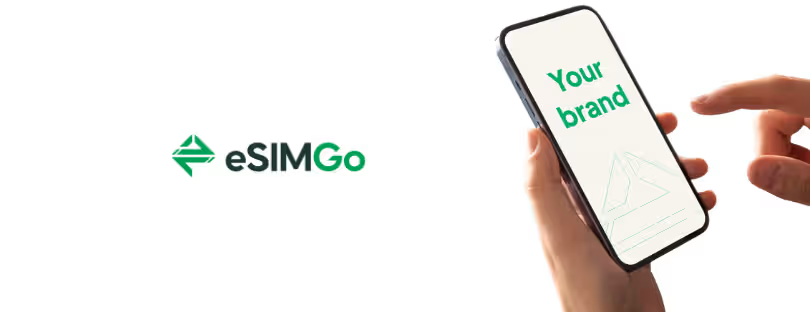
nuSIM: The SIM Card That’s Not a Card at All
What’s nuSIM, you ask? Buckle up, because we’re diving into one of the most fascinating shifts in mobile connectivity—and why it actually matters.
First Things First: What Is nuSIM?
In simple terms, nuSIM (pronounced new-SIM) is a SIM solution that’s directly integrated into the chipset of a device—there’s no physical SIM, and not even a separate embedded eSIM chip.
That’s right. No card. No tray. No QR code. Nothing to insert or scan.
nuSIM is designed especially for IoT (Internet of Things) devices—things like smart meters, e-bikes, trackers, wearables, and even shipping containers. It was created by Deutsche Telekom and is backed by major industry names like Qualcomm, Sony, MediaTek, and Nordic Semiconductor.
So, How Is nuSIM Different From eSIM?
You might be thinking, “Wait, isn’t this just like an eSIM?”
Yes—and no.
While both eSIM and nuSIM eliminate the need for a traditional plastic SIM card, nuSIM goes even further by embedding the SIM functionality directly into the modem chipset. eSIMs still rely on a separate chip soldered onto the device’s motherboard. nuSIM wipes that out entirely.
Here’s a quick breakdown:
| Feature | eSIM | nuSIM |
|---|---|---|
| Form Factor | Separate chip | Integrated into modem |
| Use Case | Phones, wearables, laptops | Primarily IoT devices |
| Provisioning | Remote, often via QR code | Pre-installed by manufacturer |
| Flexibility | High | Low (but improving) |
| Cost & Power | Medium | Ultra-low |
Why This Is a Big Deal (Especially for IoT)
Let’s say you’re a company deploying thousands of bike trackers across Europe. Traditionally, you’d need to:
- Buy SIM cards from a provider.
- Physically insert them into each device.
- Ensure they’re all activated and working.
That’s a logistical headache, right?
With nuSIM, there’s no card to insert. No tray to open. The connectivity profile is flashed during production. You ship the device, it arrives at the destination, and it’s already network-ready.
This is a dream for large-scale, low-power, mass-deployed devices that don’t need to switch networks often. Devices can be smaller, cheaper, and longer-lasting because there’s one less component to power.
But… Is nuSIM Just for Businesses?
At this point, nuSIM is not something average consumers will interact with directly. You won’t be flashing nuSIM profiles to your phone anytime soon. It’s really tailored for machine-to-machine (M2M) communication, where reliability and scale matter more than flexibility.
However—and here’s where it gets interesting—as consumer devices become more connected, nuSIM could quietly start showing up in unexpected places: pet trackers, smart suitcases, rental scooters, maybe even future wearables.
So even if you’re not actively choosing nuSIM, it might end up in your next gadget anyway.
The Pros of nuSIM
Let’s geek out a bit. Why are so many manufacturers excited about this?
- Space Saving
No chip. No card slot. More room for sensors or battery. - Lower Cost
Eliminating physical components means cheaper production—ideal for devices sold in huge volumes. - Battery Efficiency
Since nuSIM is stripped down to only essential functions, it uses much less power than traditional SIMs or even eSIMs. - Tamper Resistance
With everything embedded into the silicon, it’s a lot harder to hack, remove, or misuse. - Scalability
Imagine deploying a million devices globally without touching a single SIM card. That’s the dream nuSIM is delivering on.
The Downsides (Because There Are Always Some)
Alright, time for the flip side.
- Not Reprogrammable (Yet)
Unlike eSIMs that let you change providers remotely, nuSIM is currently limited in flexibility. It’s mostly locked to one operator at production. - Limited Consumer Use
You probably won’t see nuSIM in flagship phones anytime soon. Its sweet spot is in single-purpose, low-power devices. - Ecosystem Still Growing
While Deutsche Telekom is pushing it hard and some big-name chipset makers are on board, nuSIM still needs broader adoption to truly scale.
Who’s Using nuSIM Right Now?
Good question.
nuSIM has already been adopted by several IoT solution providers, especially in sectors like logistics, fleet management, smart agriculture, and utility monitoring. Companies are embedding nuSIM into water meters, industrial sensors, and eHealth wearables.
Deutsche Telekom is the key operator championing it, but the GSMA has recognized nuSIM as a legitimate evolution of embedded connectivity, which gives it serious credibility.
And as 5G expands, especially with NB-IoT and LTE-M support, nuSIM could play a major role in ultra-connected environments.
Why Should You Care (Even If You’re Not in IoT)?
Great question. Here’s the thing: connectivity is shifting fast.
- Phones went from mini to nano SIMs.
- Now we’ve got eSIMs.
- And soon, many connected devices won’t even have SIMs anymore.
nuSIM is a peek into that future—a world where connectivity is invisible. Where devices “just work” the moment you take them out of the box. Where there’s no need for a QR code, let alone a tiny ejector pin you can never find when you need it.
If you’re into travel tech, remote monitoring, or future-proofing your business with smart, connected products, nuSIM is a concept worth watching. Not because it’s flashy, but because it solves real problems at scale.
Final Thoughts
nuSIM isn’t trying to replace eSIM or traditional SIM cards overnight. It’s carving out a niche in a very specific, but fast-growing, market: low-cost, low-power, mass-deployed devices that need rock-solid connectivity.
It’s one of those under-the-hood innovations that quietly powers the future—no drama, no shiny ads, just solid tech doing important work in the background.
In a few years, don’t be surprised if some gadget you buy says “powered by nuSIM”—and you don’t even notice. That’s kind of the point.
Got questions about nuSIM, eSIMs, or the future of travel connectivity? Let’s talk. Or if you’re curious how these technologies could change your business, drop me a line.
Because in the world of connectivity, smaller, faster, and simpler is always the next big thing.










